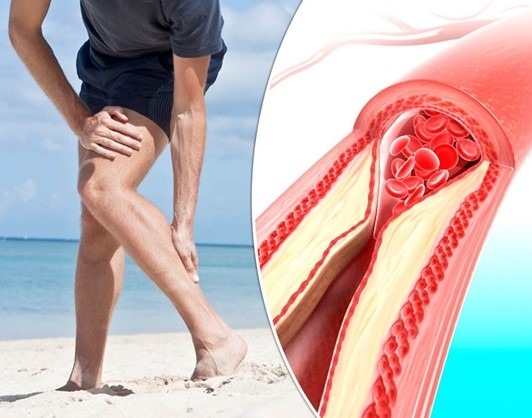What Happens if Peripheral Arterial Disease is Left Untreated?
What Happens If Peripheral Arterial Disease is Left Untreated?
Maintaining a healthy circulatory system is a critical part of living a long, healthy life. After all, your blood vessels and heart have a direct effect on how the other systems in your body function. Because of this, it is important to address vascular complications as soon as they arise, including Peripheral Arterial Disease (PAD). Here's what you should know about treating PAD before scheduling your next appointment with the trusted team at the Vascular Institute of the Rockies.
What is PAD?
PAD is a disorder that occurs when blood is unable to properly circulate through your body. It occurs when arterial blood vessels become blocked, narrowed, or experience spasms. In most cases, PAD is caused by a condition called arteriosclerosis, in which plaque builds up on the inside of one's arterial blood vessels and prevents blood from flowing as it should to different parts of your body. PAD can be quite painful, especially when exercising your legs. However, this discomfort usually subsides with rest.
What Are the Symptoms of PAD?
In its earliest stages, the signs of PAD can start slowly and occur sporadically. Many people feel fatigue or pain in their feet or legs with physical activity due to the lack of proper blood flow to their limbs. Other common symptoms of PAD include:
What Happens If PAD Goes Untreated?
PAD is a serious medical condition that should not be ignored. If left untreated, PAD may progress over time and can lead to more serious health complications. These include:
If you are diagnosed with PAD, the good news is that there are treatment options that can help slow down the progression of the disease and help you find relief from your symptoms. Common PAD treatment options include:
Schedule Your Appointment at The Vascular Institute
Your vascular health is worth protecting. If you've been diagnosed with PAD or noticed any of its symptoms, working with an experienced medical team is the best way to keep your symptoms under control and prevent the disease from getting worse. At the Vascular Institute of the Rockies, our friendly team can help you manage your PAD symptoms and create a treatment plan to protect your circulatory health and live your best life. Contact us today to schedule your free consultation and learn more about preventing, treating, and managing PAD.
Go Back Maintaining a healthy circulatory system is a critical part of living a long, healthy life. After all, your blood vessels and heart have a direct effect on how the other systems in your body function. Because of this, it is important to address vascular complications as soon as they arise, including Peripheral Arterial Disease (PAD). Here's what you should know about treating PAD before scheduling your next appointment with the trusted team at the Vascular Institute of the Rockies.
What is PAD?
PAD is a disorder that occurs when blood is unable to properly circulate through your body. It occurs when arterial blood vessels become blocked, narrowed, or experience spasms. In most cases, PAD is caused by a condition called arteriosclerosis, in which plaque builds up on the inside of one's arterial blood vessels and prevents blood from flowing as it should to different parts of your body. PAD can be quite painful, especially when exercising your legs. However, this discomfort usually subsides with rest.
What Are the Symptoms of PAD?
In its earliest stages, the signs of PAD can start slowly and occur sporadically. Many people feel fatigue or pain in their feet or legs with physical activity due to the lack of proper blood flow to their limbs. Other common symptoms of PAD include:
- Hair loss on legs
- Skin that feels cold, thin, or brittle on legs
- Discoloration (reddish or blue) on legs
- Gangrene
- Impotence
- Aching or burning pain
- Muscles that feel numb, weak, or heavy
- Limited mobility
What Happens If PAD Goes Untreated?
PAD is a serious medical condition that should not be ignored. If left untreated, PAD may progress over time and can lead to more serious health complications. These include:
- Wounds that won't heal
- Severe pain, including when at rest
- Bone and blood infections that could be life-threatening
- Amputations
- Impotence
- Stroke
- Heart attack
If you are diagnosed with PAD, the good news is that there are treatment options that can help slow down the progression of the disease and help you find relief from your symptoms. Common PAD treatment options include:
- Making healthy lifestyle changes, such as exercising, quitting smoking, and eating a balanced diet
- Addressing health conditions that could be contributing to PAD such as diabetes, high cholesterol, and hypertension
- Taking medicine to improve blood flow, such as blood thinners
- Angioplasty or stent placement to open the narrowed or blocked blood vessel
- Surgery to reroute blood flow around the narrowed or blocked blood vessel
Schedule Your Appointment at The Vascular Institute
Your vascular health is worth protecting. If you've been diagnosed with PAD or noticed any of its symptoms, working with an experienced medical team is the best way to keep your symptoms under control and prevent the disease from getting worse. At the Vascular Institute of the Rockies, our friendly team can help you manage your PAD symptoms and create a treatment plan to protect your circulatory health and live your best life. Contact us today to schedule your free consultation and learn more about preventing, treating, and managing PAD.
